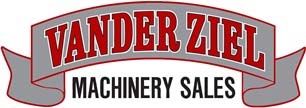Great News — 2015 Section 179 Deduction Information:
The Senate has now done its part and passed a year end budget deal that funds the U.S. government through September 2016, avoiding a shut down. This was combined with a package of tax breaks providing much needed tax benefits to a broad spectrum of small businesses.
The legislation extends more than 50 expiring tax cuts, with more than 20 becoming permanent, including increasing the maximum amount for small business expensing under IRS section 179 to $500,000. This would be reduced if the cost of section 179 property placed in service exceeds $2 Million.
What this means to you:
- 2015 is a great year to buy and save on new and used machinery!
- 2015 Expense Deduction Limit has been raised to $500,000
2015 expensing limit of $500,000 made permanent (Maximum allowance was slated to drop to $25,000 this year).
- 2015 Limit on Capital Purchases = $2 Million
Section 179 Threshold for total of equipment & software that can be purchased has increased to $2 Million (threshold would have been only $500,000 prior to the new legislation). - 50% Bonus Depreciation will be extended through 2019. Businesses of all sizes will be able to depreciate 50 percent of the cost of equipment acquired and put in service during 2015, 2016 and 2017. Then bonus depreciation will phase down to 40 percent in 2018 and 30 percent in 2019.
Please Note:
- Section 179 Deduction applies to most new and used capital equipment, and also includes certain software.
- Bonus Depreciation only applies to new equipment (no used equipment, no software)
When applying these provisions, Section 179 is generally taken first – unless the business has no taxable profit in the given tax year.
Sample Savings*
| Original Equipment Cost: | $500,000 |
| 2015 Tax Savings: | $175,000 |
| Final Equipment Cost: | $325,000 |
| Cash Savings on Equipment Purchase: | $175,000 |
*Assuming a 35% tax qualifying purchase
This information does not constitute tax advice. Please check with your tax advisor on how this applies to your business.
